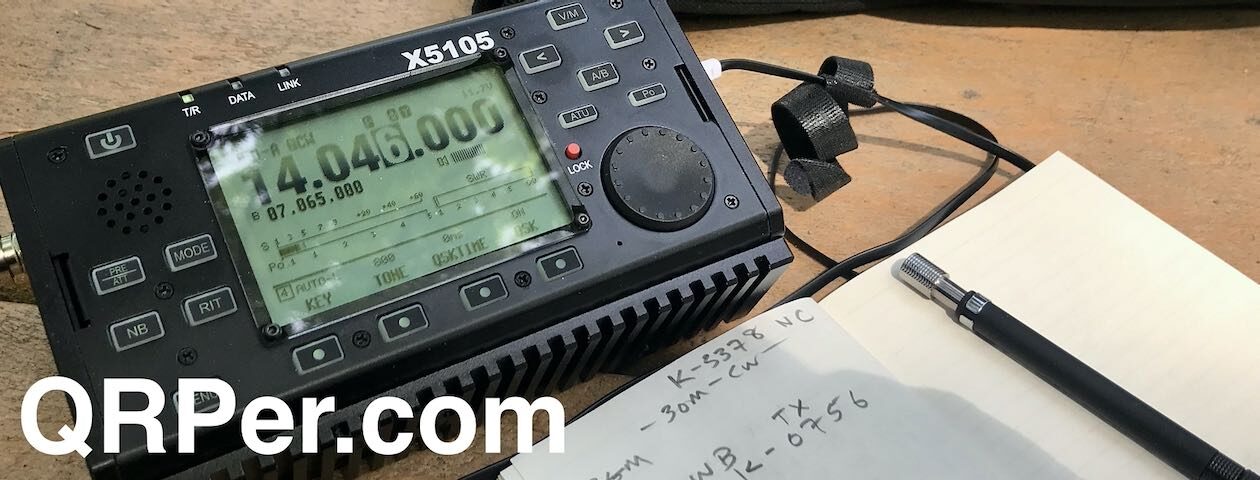 I recently saw a post in the POTA Facebook page that reminded me of a question I received from a reader last summer.
I recently saw a post in the POTA Facebook page that reminded me of a question I received from a reader last summer.
This reader asked:
Thomas, I’m new to POTA [Parks On The Air] and also plan to participate in SOTA [Summits On The Air] on vacation later this year. I’m a DXer and avid contester so portable operation is new to me. Can you give me tips about etiquette when chasing and, especially, activating a park or summit? In contesting and DXing there are codes of conduct which I try to always try to follow.
I though I might post some of the tips I sent him. I also asked for input from some other activators/hunters and they independently confirmed these. I’d welcome any additions you might have in the comments section.
Unofficial POTA/WWFF/SOTA etiquette tips:
- POTA and SOTA are not timed contests, so it’s okay to slow down and and be patient with hunters and activators.
- When you hear a Park To Park (P2P) or Summit To Summit (S2S) call:
- If you’re a hunter, step out of the way in a pile-up and let them through. If the activator asks for your call instead of the site-to-site station, work them but also let them know at the end of your exchange that there’s a P2P or S2S contact in the pileup. Those ops are usually operating in tougher conditions with less power than other hunters. Activators especially appreciate site-to-site contacts.
- As an activator, give site-to-site stations priority for the same reason.
- In general, follow the DX Code of Conduct. Most importantly:
- Never tune up on or immediately next to a POTA activator
- Wait for an activator to completely end a contact before calling them.
- Send your full call sign and only send it once.
- Chasers should note that activators need a certain amount of logged contacts in order to complete a valid activation. In SOTA and activator needs 4 contacts, in POTA, they need 10 for example. With this in mind:
- Post spots to the SOTA or POTA network if you notice an activator hasn’t been spotted for some time. This will help more chasers find them.
- If you notice that an activator changes modes or bands, try to work them again especially if you hear that they’re struggling for contacts. Each time you work an activator on a different mode or band, in POTA (not SOTA) it counts as a unique contact for a valid activation.
- Check scheduled activation plans and frequencies. Not all operators have internet coverage to self-spot and phone operators, especially, rely on hunters looking out for and spotting them.
- Some notes specifically for CW operators:
- If chasing a CW activator and you hear a large pile-up, don’t zero-beat the activator’s signal. Rather, move slightly off frequency so the tone of your signal is higher or lower than that of the operator. On the activator’s side, if every one has a perfect zero beat, it sounds like one continuous carrier as opposed to individual signals.
- Don’t operate at contest CW speeds as you’ll have a more difficult time making contacts. It’s rare to hear even experienced CW operators in POTA and/or SOTA going faster than 20 WPM.
- Don’t send a “K” after your callsign when chasing activators–just send your callsign. This is especially confusing to an activator if you have a 2×2 or 1×2 callsign. They may recognize you as W1AWK instead of “W1AW, for example.
- Unfortunately, you will eventually hear someone intentionally tuning up on an active frequency or deliberately trying to cause harmful interference to an activation. As an activator and hunter, it is important not to “feed the trolls.” Simply ignore them and use it as an opportunity to hone your skills at mitigating QRM and harmful interference. If no one acknowledges a troll, they will abandon frequency much quicker. Sadly, complaining or asking them to leave tends to egg them on.
- While it’s actually encouraged to send kind comments and compliments as you chase or activate, keep in mind that activators often have a limited amount of time on site and on the air. As mentioned above, they also need a minimum number of contacts in order to achieve a valid activation. This is not the best time to start a long conversation or rag-chew with an activator. Quite often, there are others who are waiting for you to finish your contact so they can call the station and the activator doesn’t want to offend you by asking you to move on.
- In general, be patient, courteous, and kind to all chasers and activators. POTA, SOTA, WWFF, and other similar field radio activities feel more like a family or community gathering than a contest.
I’m sure there are other points I’ve missed here. Please comment if you have something to add!
Update: Click here to read Mikel’s (EA2CW) Spanish translation of this article.
